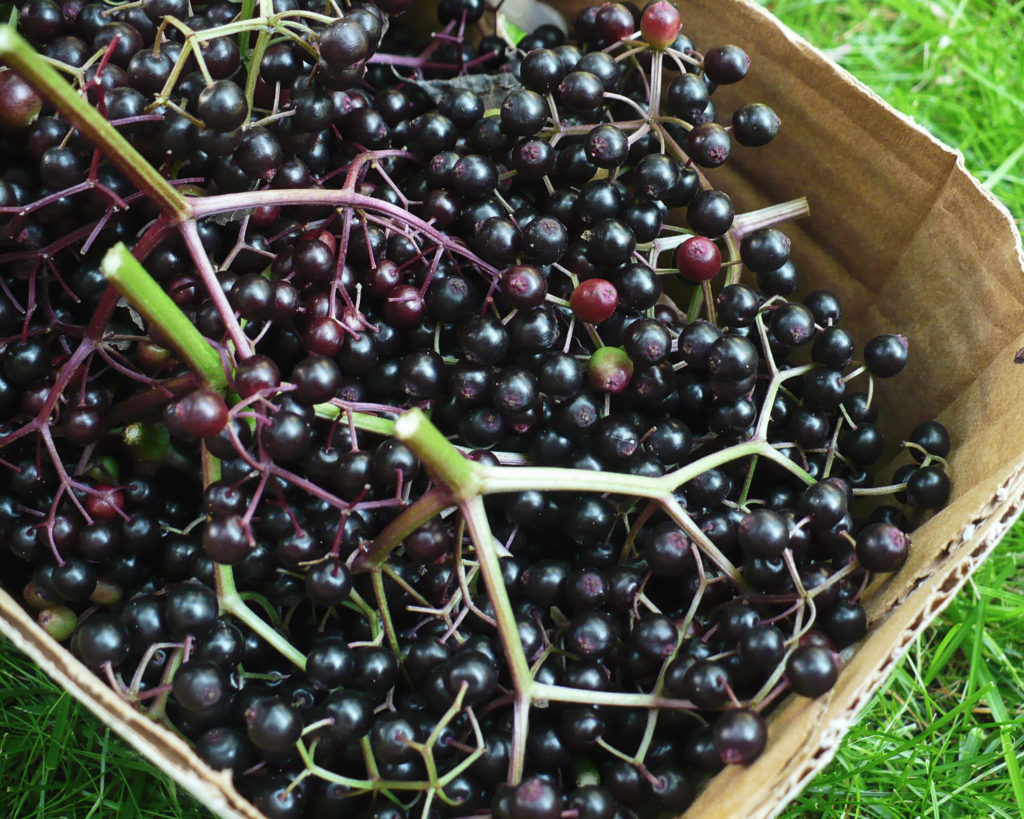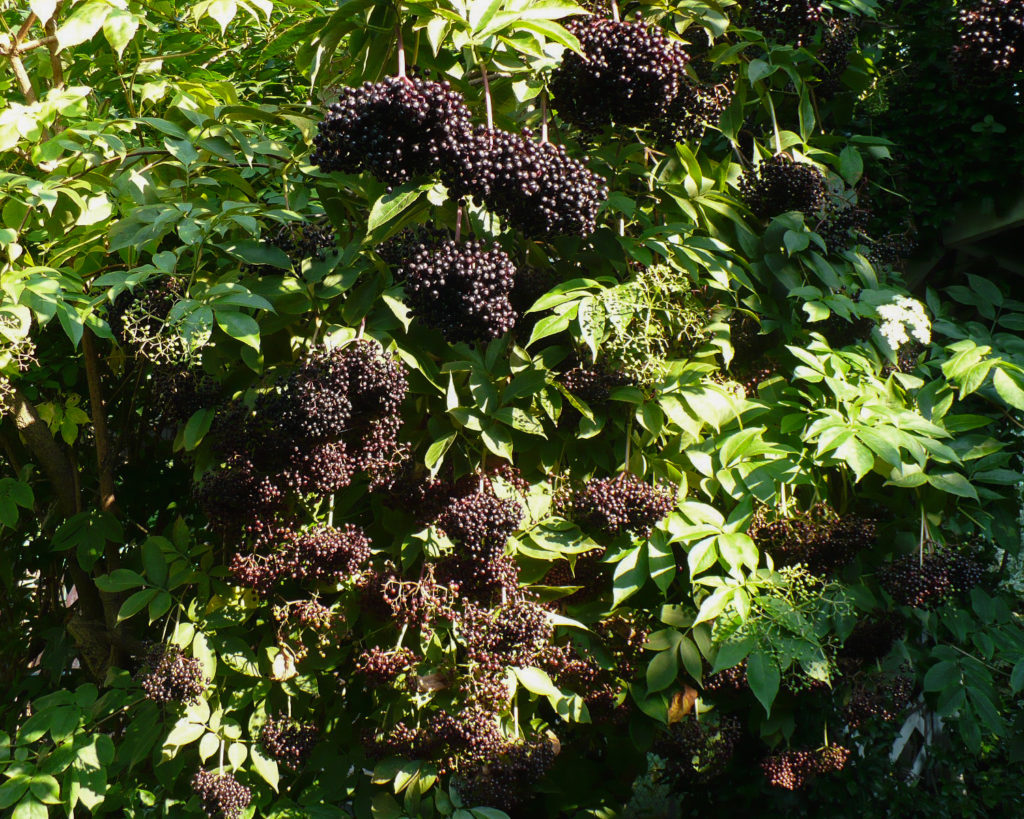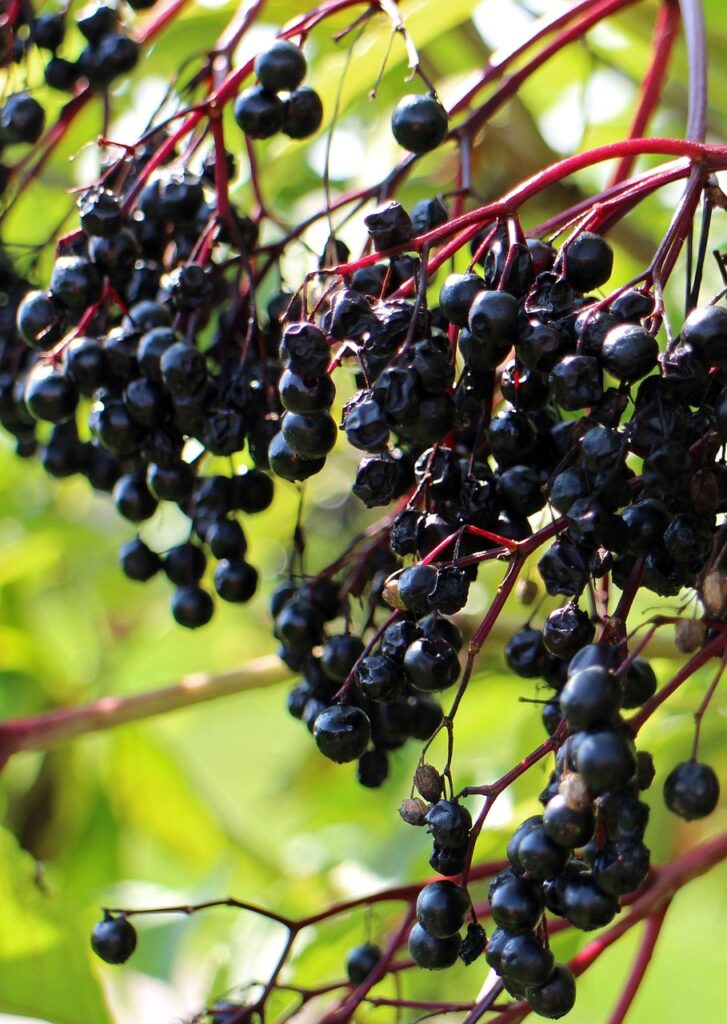Elderberries
Anishinaabemowin: papashkisiganak
Plains Cree: sâsâkominân
Ojibwe: bibigwemin
Summary
Elderberries are popular for their unusual flavour in pies, jellies, and jams, and are sometimes used in winemaking. They hang in clusters from wood-like stems. Only the purplish-black elderberries are good for eating, and must always be cooked. Green or bright red elderberries are bitter, and possibly toxic, even when cooked.
Jump To
Average Ripening Timeline: mid August to mid September


Ripeness Indicators
- Color When Ripe: a deep purple to black colour
- Feel & Texture When Ripe: berries produce dark purple juice when squeezed
- Taste & Smell When Ripe: not applicable – raw elderberry is toxic, and juice should be used to indicate ripeness
- Underripe if…green skin, juice when squeezed is pale and watery
- Overripe if…mushy, wrinkled, or discoloured

How to Harvest
Average Yield: up to 10 lbs
- Elderberries grow in clusters. When picking elderberries, remove the cluster as a whole by snapping the stem at the base of the branch
- Under ripe elderberries will not ripen after being harvested

How to Store and Eat
Storing
- Keep all the berries on the cluster until you are ready to eat, bake, juice, or whatever other amazing thing you’re going to do!
- Elderberries should be cooked or frozen as soon as possible. Only keep at room temperature for 2-4 hours
- Remove the berries from the stem by holding the cluster over a bowl with one hand and gently running your other hand down the cluster, separating each berry and allowing it to fall into a bowl below
- Fridge: Store unwashed berries in a loosely covered container in the fridge for 1-2 days
- Freezer: Wash and dry berries, on or off the stems, then freeze in a single layer on a baking sheet. Transfer to a container or bag. If you leave the stems on, they can easily be removed once the berries are frozen. Use within 6-10 months to make syrup or jelly
Ideas for Eating
Elderberries are poisonous raw and need to be cooked to make them edible.
Pie; Jelly & jam; Syrup; Wine; Beverages